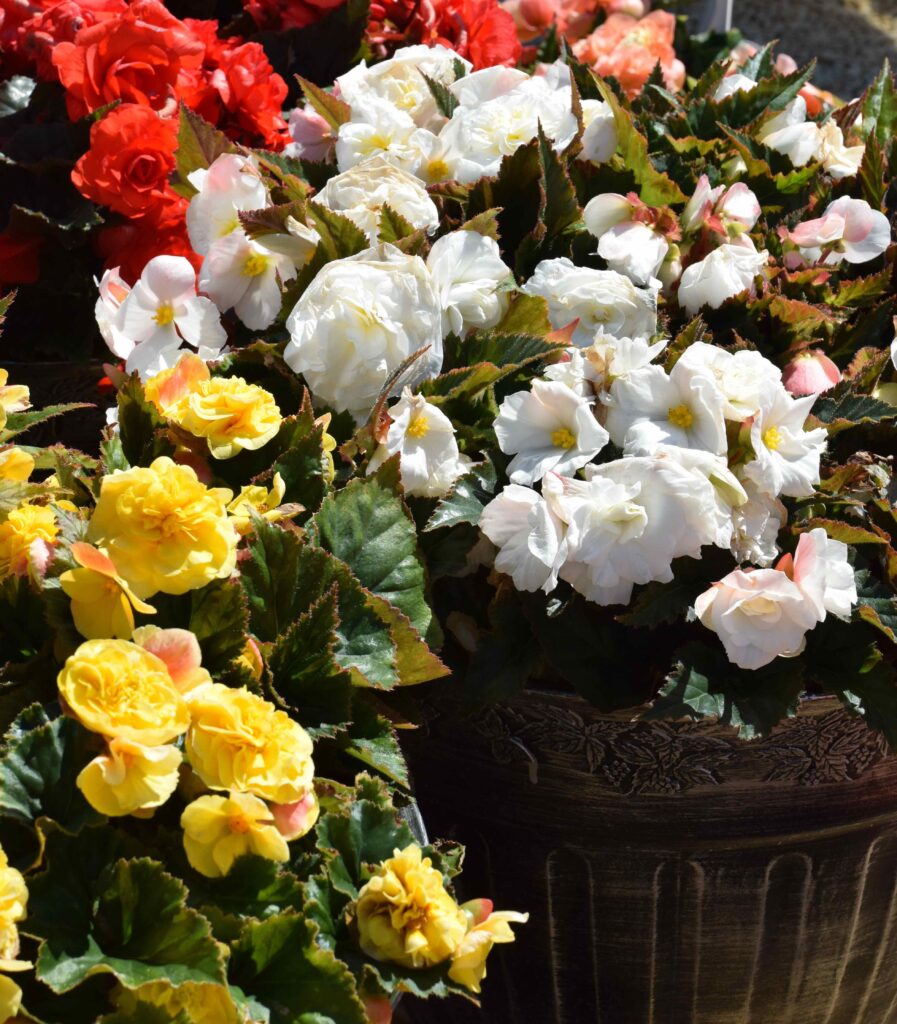
With so many flowers to fill our gardens in summer it can be difficult to know what to pick. Twenty years ago the most popular choice for patio pots and small garden beds was the ubiquitous busy Lizzie. But then downy mildew struck and they became almost impossible to grow. Although there are now resistant varieties including the large-flowered New Guinea busy Lizzies, in the meantime many of us turned our attention to begonias.
There are hundreds of begonia species in the wild and only a few have been used to create our garden begonias but there is still lots of choice.
Although it is a simplification, there are two basic kinds for the summer garden: tuberous begonias and fibrous-rooted begonias.
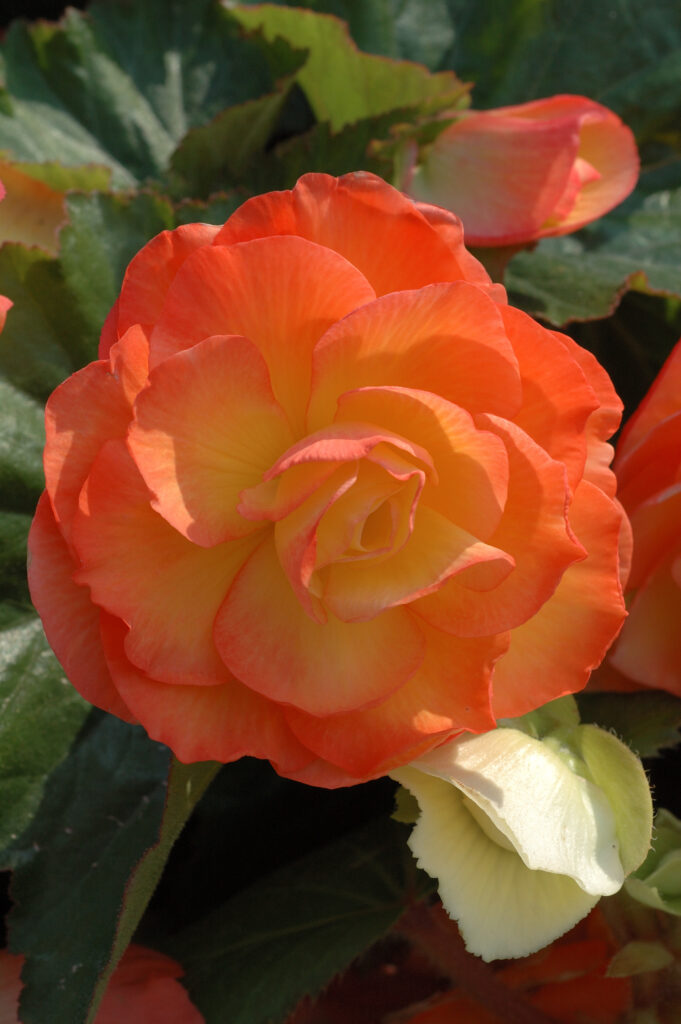
Tuberous begonias can be grown from seed and if you buy the plants in early summer they will probably have been grown from seed. But they will form tubers and these can be kept over winter and started into growth the following spring to bloom again. You can also buy the dried tubers now to plant up indoors.
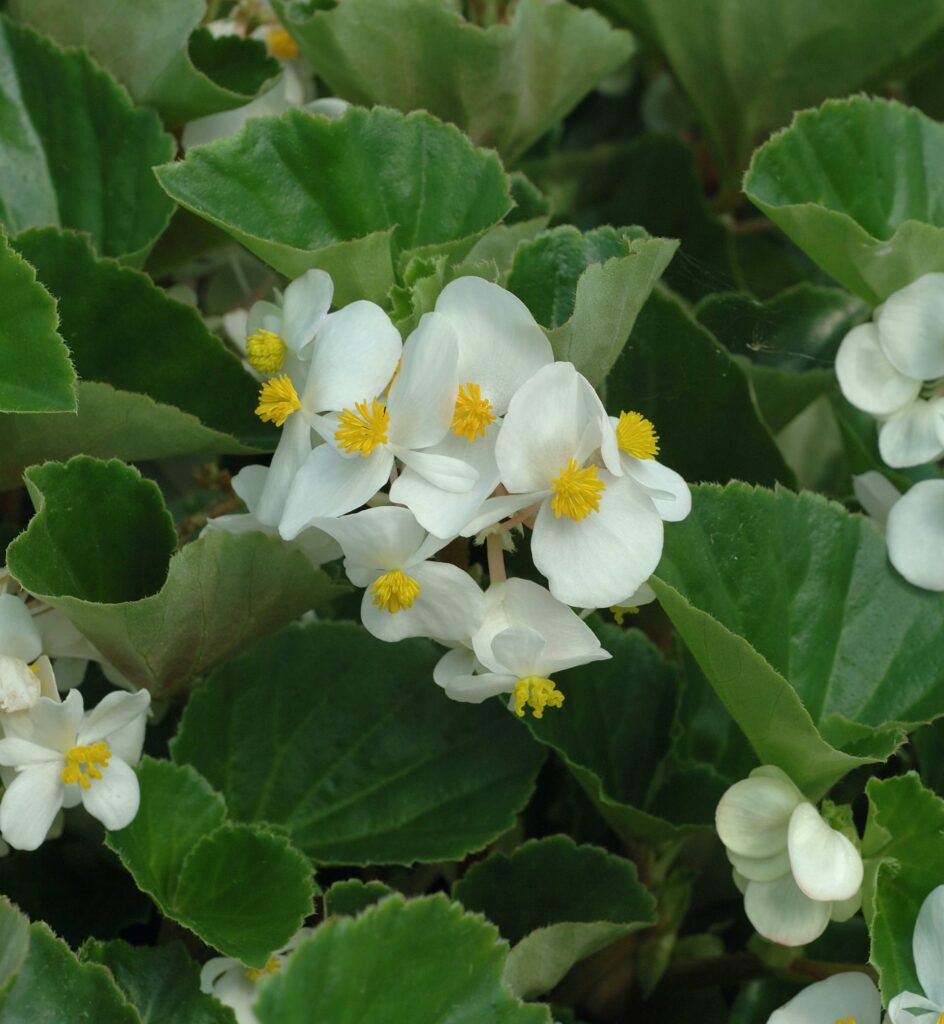
The fibrous-rooted begonias do not form tubers and remain as growing plants all year. To keep them for next year you must keep them in frostfree conditions (ideally above 10c) in winter. These include the common, small ‘semps’ (sempervirens) begonias, called wax begonias in the USA. They are usually treated as annuals and discarded in autumn when pulled up from beds and pots.
Although there are hardy begonias, the most popular kinds are not hardy. Frost will kill all begonia stems and leaves.
From seed
All begonias can be grown from seeds but the seeds are tiny and are not the best flowers to try if you are a beginner. They need to be sown in early spring to get them in flower by summer and the seedlings are prone to disease and collapsing if they are too wet or cold. It is much better to start with pots of seedlings which can be bought at Nags Hall in March or by post. These can be grown on at home but they need light and warmth.
From tubers
If you want a slightly easier challenge of growing your own begonias, rather than buying mature plants, you can buy tubers in packs. These need to be started in warmth and planted out in May where they are to bloom.
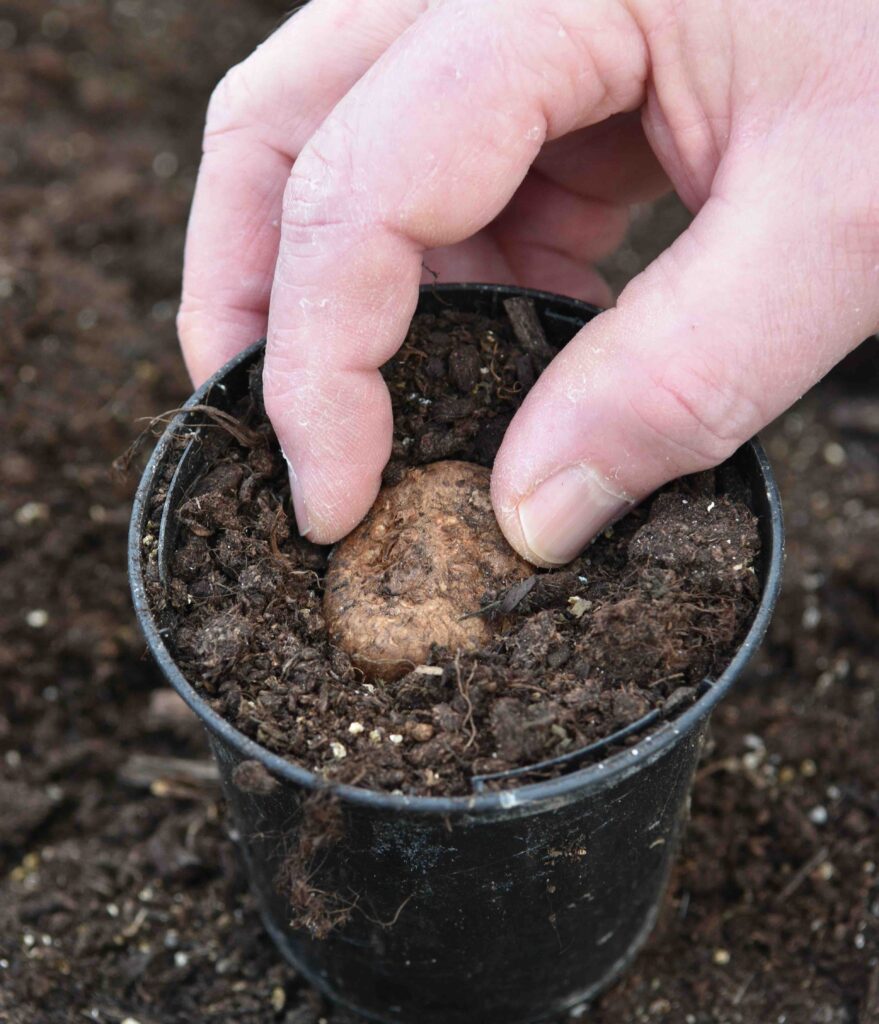
Pot each tuber in a 8cm (3in) pot in multipurpose compost. Keep slightly moist and warm – about 20c (70f) – and in a few weeks you should see pink shoots. It can be difficult to work out which is the top of a tuber – it should be concave. If you are not sure, simply put the tubers in a plastic bag with some moist compost and keep them warm and in a few weeks you will see pink shoots and you can pot them.
You can buy your tubers now from Nags Hall.
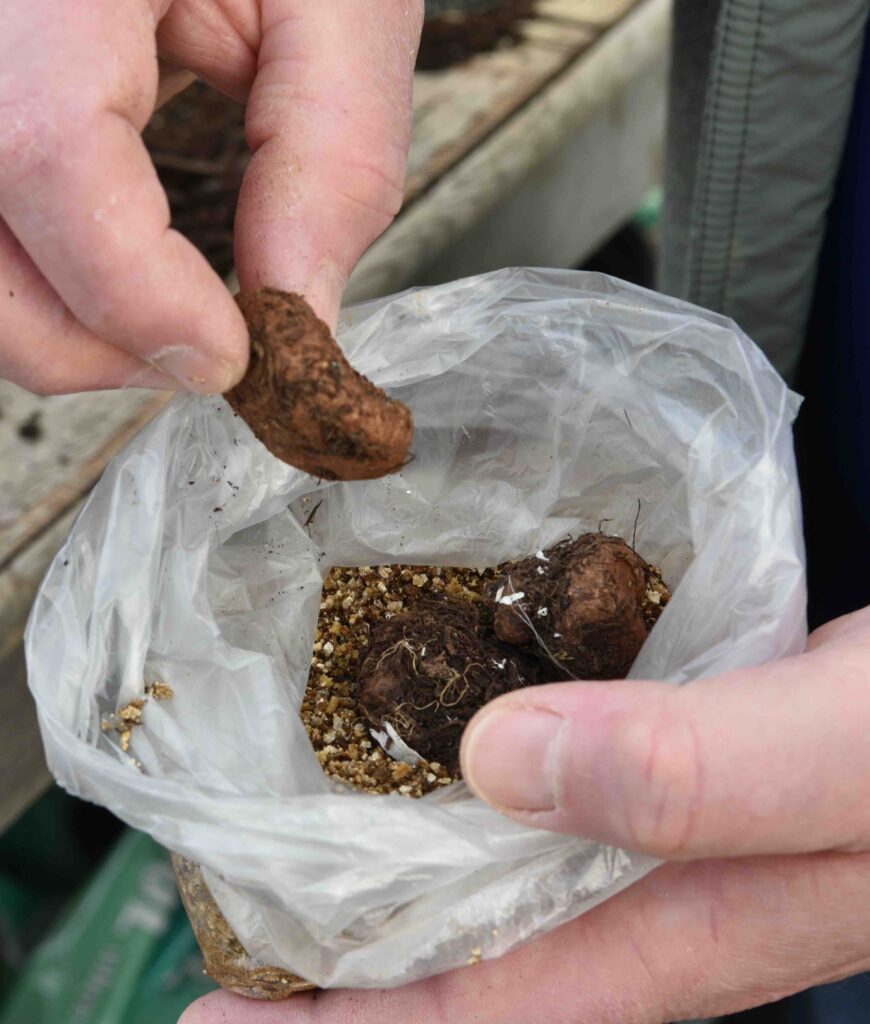
Tuberous begonias
These typically have large, double flowers in a wide range of colours. They usually have upright stems though they can flop under the weight of the huge blooms. Although they are grown from seed, the popular ‘NonStop’ begonias belong to this group.
Pendula begonias are also tuberous and you can buy tubers, plants or seedlings. They have variable flowers, from large and frilly to slender and almost ‘fuchsia-like’. They are ideal for baskets, large pots and window boxes.
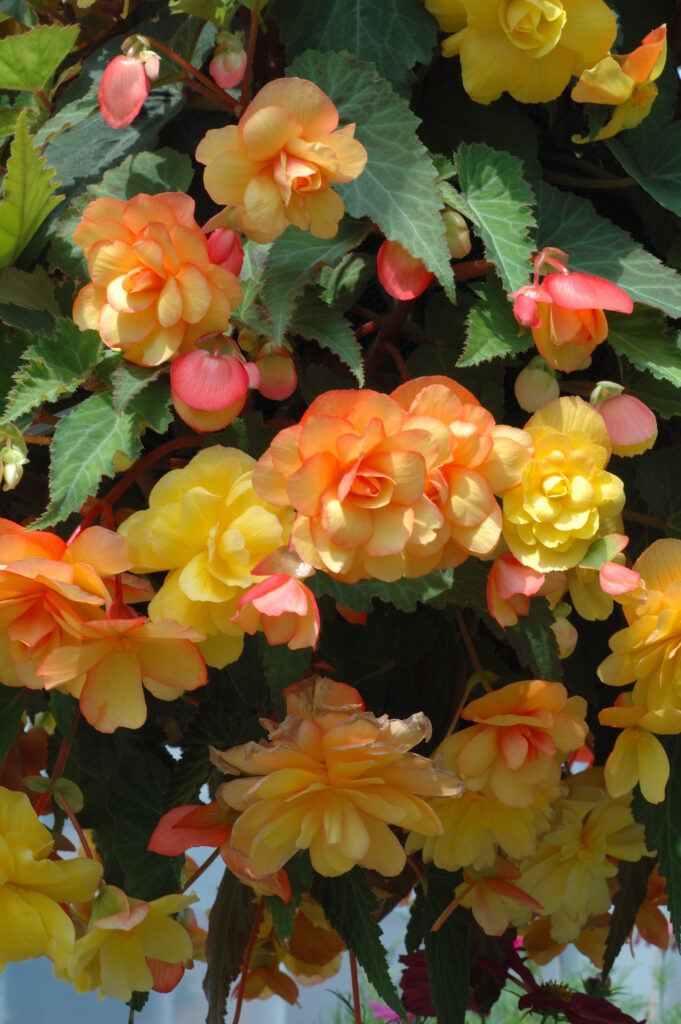
Fibrous-rooted begonias
The most popular are the ‘semps’ which have small, shiny leaves and masses of red, pink or white flowers. The leaves can be green or purple. Although most are dwarf and only grow to about 20cm (8in) high, there are some, such as the showy ‘Dragon Wing’ types that grow to more than 75cm (30in) high. They are perfect for containers but also suitable for garden beds.
Brand new this year is the massive, dramatic, pink-flowered ‘Stonehenge’ which you should look out for.
How to grow begonias
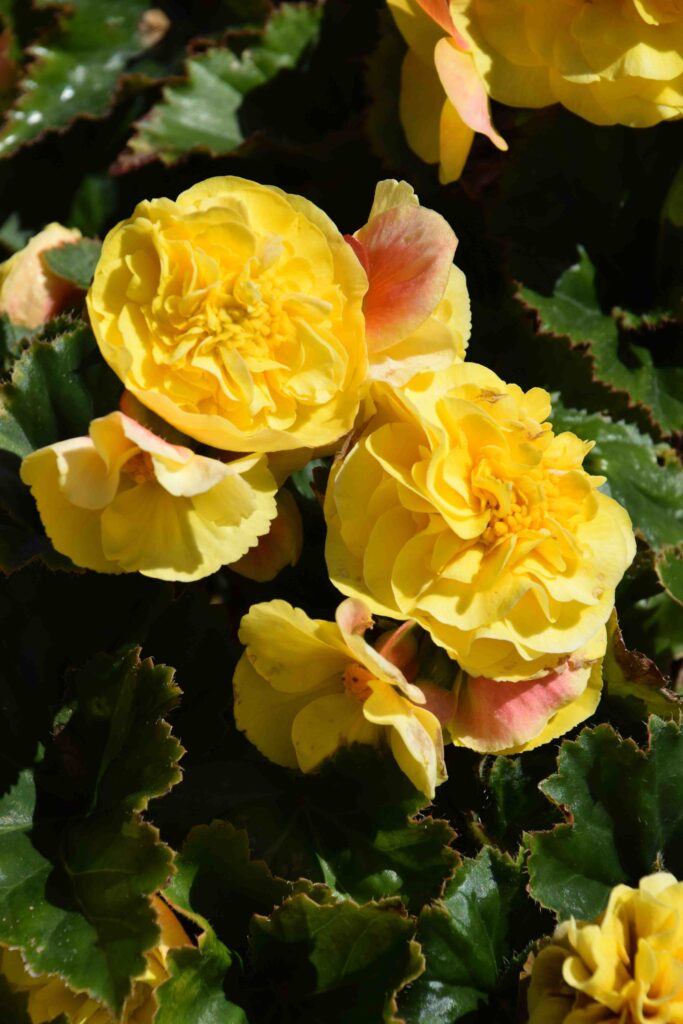
Begonias are easy to please provided they are not chilled. They are rather succulent and that is a sign that they hate being waterlogged. Wet, cold compost will kill them. They will withstand some drought but it may lead to mildew.
Most tolerate full sun but they also withstand some shade.
In gardens where vine weevil are a real problem you may find that the grubs will eat begonia roots and tubers.